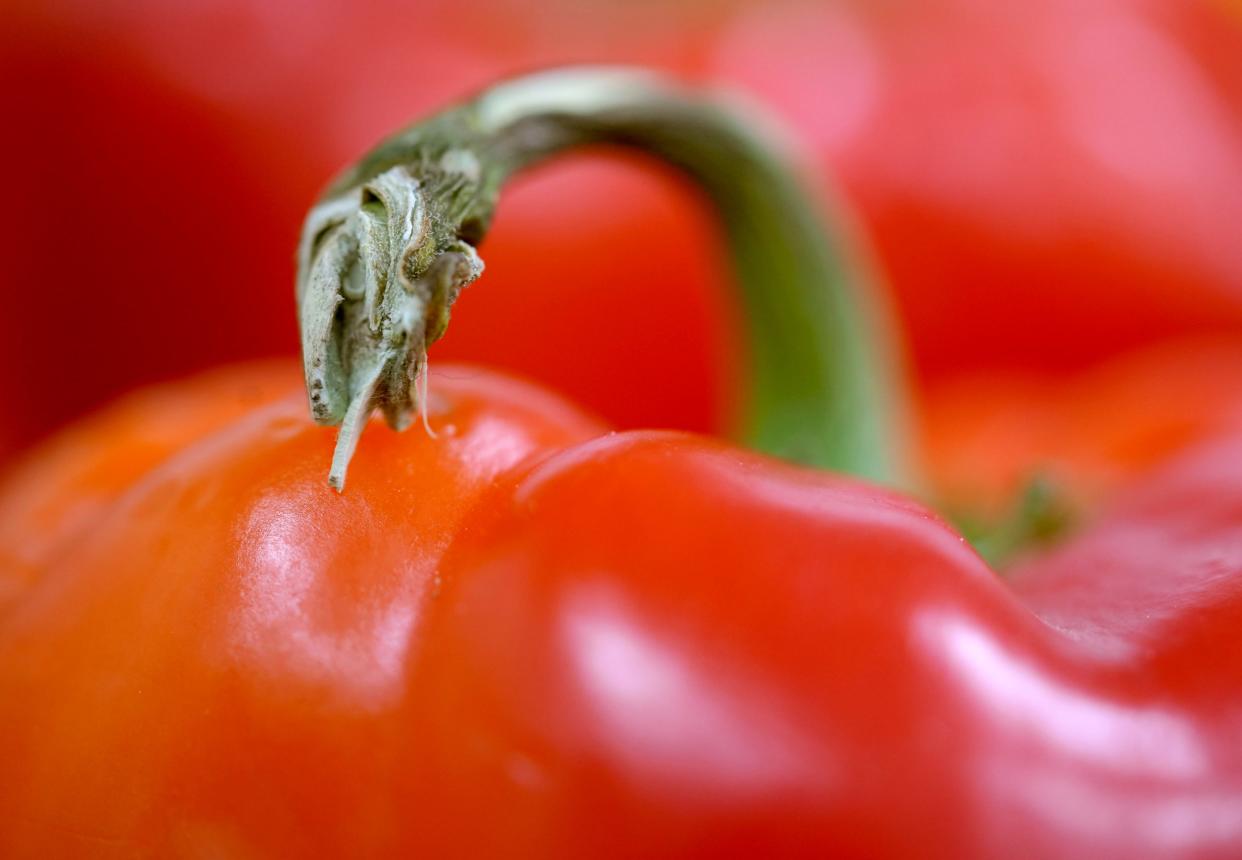Tips for growing the perfect pepper in your home garden

Now that temperatures have heated up in Greater Columbus, warm-season vegetables such as peppers are basking in the heat. Peppers are in the Solanaceae family (also known as the nightshade family), along with other warm-season vegetables such as tomato, eggplant and potato. Peppers are an easy vegetable to grow in the home garden, and can be prolific producers. And with the variety of colors, shapes and flavors available from sweet to spicy, they make an excellent addition to the home garden.
How-to: Top 10 tips for growing a better veggie garden
Site requirements
Ideally, peppers should be grown in well-drained soils that contain a high level of organic matter, but they can also thrive in moderately fertile soil. Soils low in organic matter can be amended by adding compost, peat moss or other organic matter. Peppers grow best in a slightly acidic soil with a pH of 6 to 6.8. A pH of 7 is neutral. Native soils in Greater Columbus tend to more alkaline than acidic, so only add lime to adjust the pH of your soil if a soil test confirms the need to do so.
Peppers also can be grown successfully in containers and raised beds if drainage or soil quality of your native soil is a challenge. Like all warm-season vegetables, peppers require at least six to eight hours of full sun each day, so be cognizant of how the sun falls on your garden space throughout the entire day, not just during the morning hours.

Pepper types and varieties
There are hundreds of different varieties (also called cultivars) of peppers available for gardeners to choose from. Most garden centers in Greater Columbus are currently offering many different varieties of different types of peppers, so you are sure to find a variety or two to suit your taste and tolerance for heat.
Unlike sweet peppers, hot peppers have higher levels of a volatile oil called capsaicin. Popular types of hot peppers include habanero, ghost, Carolina reaper, Scotch bonnets and others. Some popular types of sweet peppers include bell, cubanelle, banana, cherry, poblano and pepperoncini.
The bell pepper is likely the most ubiquitous type of pepper and is a perennial fixture in both the produce aisle and the home vegetable garden. Flavors range from bitter and grassy to tangy to sweet. Green bell peppers feature a more bitter flavor profile, while orange and yellow bell peppers are sweeter than green. The red bell pepper has the sweetest taste of all the bell peppers.
More: Vegetable gardeners, beware of working in wet soil
Transplanting tips
When transplanting peppers in the garden, plant seedlings no deeper than the soil line of the growing tray. Unlike tomatoes, planting peppers deeper can cause stem rot. Most pepper plants should be spaced 18-24 inches apart in the garden but consult the plant tag or seed packet for spacing guidelines for specific varieties.
Proper spacing is important to allow room for growth and for adequate airflow needed to reduce disease pressure, especially during periods of wet or humid weather conditions. Several common weeds are also members of the nightshade family and may carry disease pathogens which can affect peppers, so be sure to mulch between plants and between rows in order to control weeds and retain soil moisture.
Because peppers are in the same family as other solanaceous crops such as potato, tomato and eggplant, they are susceptible to the same insects and diseases. For this reason, always practice crop rotation and do not plant peppers in a location where other members of the same plant family were planted last year. Remember to rotate plant families, not individual crops.
Cultural challenges
Pepper plants require irrigation during dry periods to prevent fruit or flower drop. Even and consistent watering is important to prevent blossom end rot, a physiological deformity of the fruit. Peppers require 1-2 inches of water per week. The use of a soaker hose or drip irrigation can provide efficient delivery of water and prevent unnecessary leaf moisture, which can encourage growth of disease-causing pathogens.
Poor weather conditions such as a late frost in early June or cold nights can cause flower or fruit drop, or a failure to flower. Conversely, hot, dry winds, periods of extreme heat above 90 degrees, or drought can cause immature fruit or flowers to drop from pepper plants. Blossom damage from high temperatures can cause malformed, although completely edible fruit.
Peppers are susceptible to common diseases such as bacterial leaf spot, anthracnose, Phythopthora blight and others when environmental conditions are conducive to growth of specific pathogens. Insects such as aphids, flea beetles, stinkbugs, spider mites and others can be harmful to peppers when present in large numbers, so be sure to closely inspect plants often in order to diagnose pest and plant health problems.
How-to: Limited to a small space? Here's how to grow a successful container garden
Harvesting peppers
Most peppers are harvested in the immature green stage. Bell peppers are typically ready for harvest when 3-4 inches long. The fruit will easily break from the plant when ready for harvest. Leaving peppers on the plant longer will result in the fruit developing other colors such as red, orange or purple when fully matured.
Mike Hogan is Extension Educator, Agriculture and Natural resources, and associate professor with Ohio State University Extension. hogan.1@osu.edu
This article originally appeared on The Columbus Dispatch: Tips for adding peppers to your home garden
